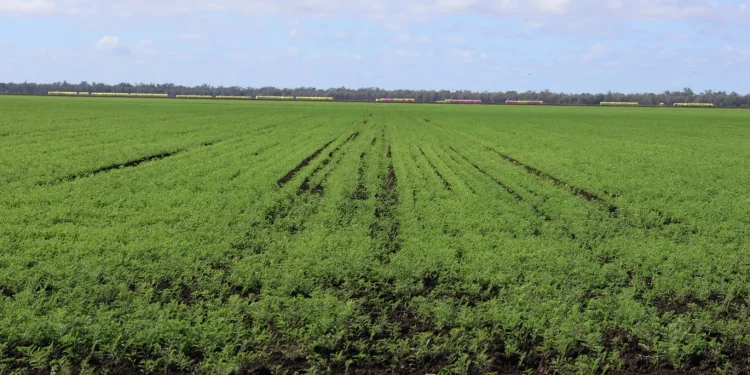While lentil exports see an uptick, chickpea shipments decline amidst shifting global demand and crop conditions
In June 2024, Australia exported 39,718 tonnes of chickpeas and 140,549 tonnes of lentils, according to the latest figures from the Australian Bureau of Statistics. The data highlights a nuanced picture of Australia’s pulse crop export landscape, with contrasting trends in chickpea and lentil markets.
Chickpea exports experienced a 9 percent decline from the May total of 43,849 tonnes, despite increases in shipments to India and Nepal. Notable decreases were observed in exports to Pakistan, which fell by 2,698 tonnes, and the United Arab Emirates, which saw a drop of 3,500 tonnes. However, bookings indicate a robust outlook for the upcoming quarter, with approximately 300,000 tonnes expected to be shipped as the harvest progresses south from Central Queensland to northern New South Wales. Current conditions for chickpea crops are reported as very good to excellent in all major growing regions, suggesting a favorable production environment.
In contrast, lentil exports saw an 8 percent increase from the May figure of 130,295 tonnes. Significant rises were reported in shipments to Bangladesh, Egypt, and Nepal, contributing to the total export volume for June. Despite this growth, the pace of bulk lentil exports has slowed this month, reflecting a rundown of stocks as Canadian new-crop supplies enter the market.
Conditions for lentil production are less ideal, with some districts in South Australia and Victoria requiring substantial rainfall to achieve average yields. The data from April to June shows varied performance across markets, with Bangladesh and India being major importers. For instance, lentil exports to Bangladesh increased to 44,920 tonnes in June, while exports to India reached 57,244 tonnes.
Overall, the June export figures underscore the dynamic nature of Australia’s pulse crop trade, influenced by both global demand shifts and domestic crop conditions.
Error




